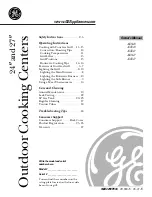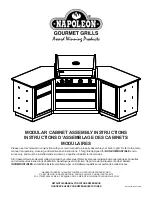
GB
- 18 -
6.6 Tips for working with your hammer drill
6.6.1 Drilling concrete and masonry
•
Switch the Drill/Hammer drill selector switch
(3) to position B (Hammer drill).
•
Always use carbide drill bits and a high speed
setting for drilling into masonry and concrete.
6.6.2 Drilling steel
•
Switch the drill / hammer drill selector switch
(3) to position A (drill).
•
Always use HSS drill bits (HSS = high speed
steel) and a low speed setting for drilling
steel.
•
We recommend that you lubricate the hole
with a suitable cutting fluid to prevent unne-
cessary drill bit wear.
6.6.3 Starting holes
If you wish to drill a deep hole in a hard material
(such as steel), we recommend that you start the
hole with a smaller drill bit.
6.6.4 Drilling tiles
•
To start the hole, switch the drill / hammer drill
selector switch (3) to position A (drill).
•
Switch the drill / hammer drill selector switch
(3) to position B (hammer drill) as soon as the
drill bit has passed through the tiles.
7. Replacing the power cable
Danger!
If the power cable for this equipment is damaged,
it must be replaced by the manufacturer or its
after-sales service or similarly trained personnel
to avoid danger.
8. Cleaning, maintenance and
ordering of spare parts
Danger!
Always pull out the mains power plug before star-
ting any cleaning work.
8.1 Cleaning
•
Keep all safety devices, air vents and the
motor housing free of dirt and dust as far as
possible. Wipe the equipment with a clean
cloth or blow it with compressed air at low
pressure.
•
We recommend that you clean the device
immediately each time you have finished
using it.
•
Clean the equipment regularly with a moist
cloth and some soft soap. Do not use
cleaning agents or solvents; these could at-
tack the plastic parts of the equipment. Ensu-
re that no water can seep into the device. The
ingress of water into an electric tool increases
the risk of an electric shock.
8.2 Carbon brushes
In case of excessive sparking, have the carbon
brushes checked only by a quali
fi
ed electrician.
Danger!
The carbon brushes should not be rep
laced by anyone but a quali
fi
ed electrician.
8.3 Maintenance
There are no parts inside the equipment which
require additional maintenance.
8.4 Ordering spare parts and accessories
Please provide the following information when
ordering spare parts:
•
Type of unit
•
Article number of the unit
•
ID number of the unit
•
Spare part number of the required spare part
For our latest prices and information please go to
www.isc-gmbh.info
Tip! For good results we
recommend high-quality ac-
cessories from
!
www.kwb.eu
[email protected]
9. Disposal and recycling
The equipment is supplied in packaging to pre-
vent it from being damaged in transit. The raw
materials in this packaging can be reused or
recycled. The equipment and its accessories are
made of various types of material, such as metal
and plastic. Never place defective equipment in
your household refuse. The equipment should
be taken to a suitable collection center for proper
disposal. If you do not know the whereabouts of
such a collection point, you should ask in your
local council o
ffi
ces.
Anl_TE_ID_750_1_E_SPK7.indb 18
Anl_TE_ID_750_1_E_SPK7.indb 18
06.10.15 16:01
06.10.15 16:01
















































